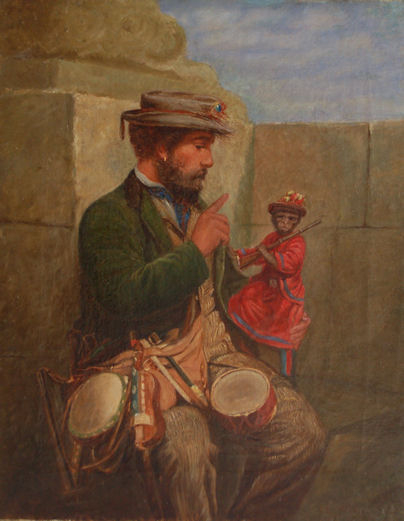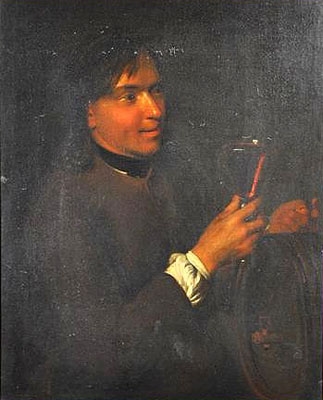featured item
a troubadour resting with his capuchin monkey, 19th century
- View other items in:
- antiques interior design modern and vintage
- other interior design
artware ltd
Enquire about this antique
Artware Ltd has 565 antiques for sale.
click here to see them all
There have been performances in public places for gratuities in every major culture in the world, dating back to antiquity. This art form was the most common means of employment for entertainers before the advent of recording and personal electronics. Prior to that, a person had to produce any music or entertainment, save for a few mechanical devices such as the barrel organ, the music box, and the piano roll. Organ grinders were commonly found busking in the old days. The term "busking" was first noted in the English language around the middle 1860s in Great Britain. Up until the 20th century buskers were commonly called minstrels in America, Europe and other English-speaking lands.
The word "busk" comes from the Spanish root word "buscar", meaning "to seek" ? buskers are literally seeking fame and fortune. Busking is common among some Gypsies, also known as the Romani people. Romantic mention of Gypsy music, dancers and fortune tellers are found in all forms of song poetry, prose and lore. The Roma brought the word busking to England by way of their travels along the Mediterranean coast to Spain and the Atlantic ocean and then up north to England and the rest of Europe. In medieval France buskers were known by the terms troubadours and jongleurs. In northern France they were known as trouveres. In old German buskers were known as Minnesingers and Spielleute. In obsolete French it evolved to busquer for "seek, prowl" and was generally used to describe prostitutes. In Italian it evolved to buscare which meant "procure, gain" and in Italy buskers are called buscarsi or, more simply, Buskers (see loan word). In Russia buskers are called skomorokh and their first recorded history appears around the 11th century.Mariachis are Mexican street bands that play a specific style of music by the same name.] Mariachis frequently wear ornate costumes with intricate embroidery and beaded designs, large brimmed sombreros and the short charro jackets. Mariachi groups busk when they perform while traveling through streets and plazas, as well as in restaurants and bars.Around the middle 19th century Japanese Chindonya started to be seen using their skills for advertising, and these street performers are still occasionally seen in Japan.In the US, medicine shows proliferated in the 19th century. They were traveling vendors selling elixirs and potions to improve the health. They would often employ entertainment acts as a way of making the clients feel better. The people would often associate this feeling of well-being with the products sold. After these performances they would "pass the hat".
Antiques.co.uk Ref: 6E5YKHFF
- Materials:
- Oil on Canvas
- Width (cm):
- 45.00 x 36.00 (cm) 17.72 x 14.17 (ins)
Artware Ltd
Artware Fine Art specialises in fine antique, decorative and historical portraits and topographical pictures . We cover a period from the 17th and 18th centuries through to the 19th & 20th Centuries. We have over 150 portraits in stock, which can be viewed on our web site, each historical portrait has well researched biographical information both on the sitter and the artist.
Contact details
18 La gare
51 Surrey row
London
Greater London
SE1 0BZ
UNITED KINGDOM
T: 0207 921 97904
E: greg@artwarefineart.com
W: www.artwarefineart.com












